|
|
本帖最後由 khle 於 2013-3-27 22:30 編輯
美國 Car and Driver 試楂 2014 Lexus IS。車基本改變不大,引擎都係2•5 同 3•5。比較大改變就係個look , 個 interior 跟LFA 風格,特別係IS 350 F 係用近似 LFA嘅LCD 表版。普通IS 250 就冇LCD 。
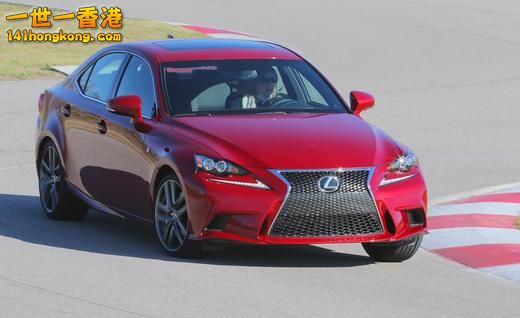
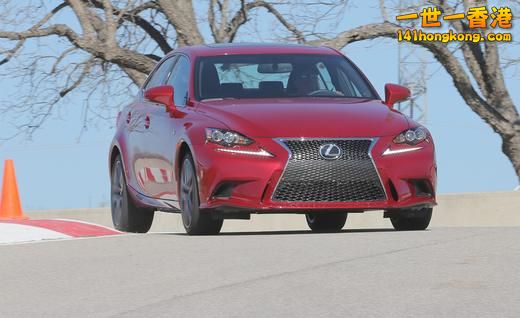
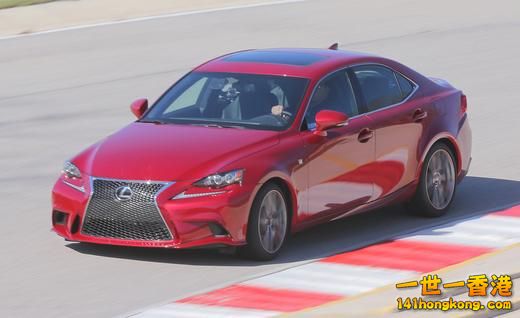
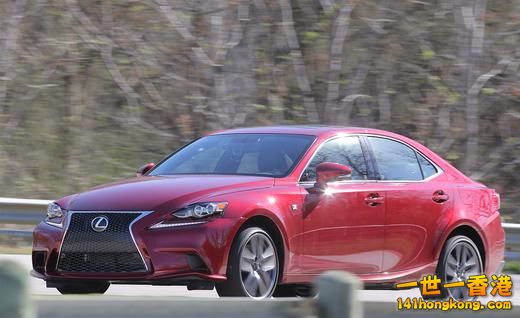
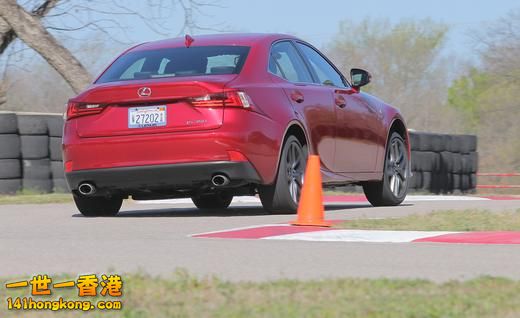
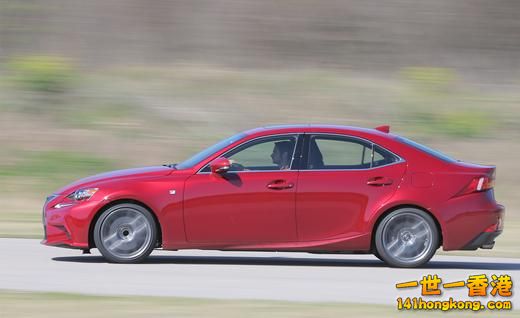
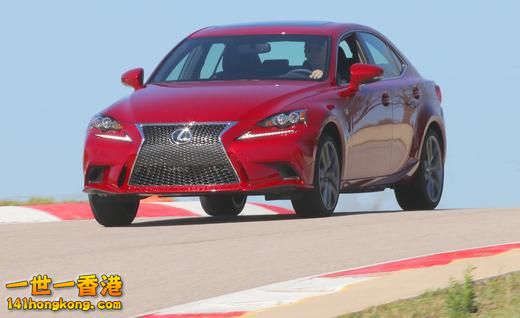
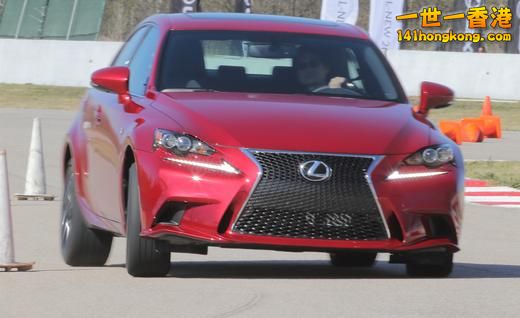
If you’ve noticed there hasn’t been much to notice about the Lexus IS sedan for some time, you get an A in noticing. After debuting for the 2006 model year, the brand’s smallest rear-drive four-door went on something of a hiatus for eight seasons. (This is not including the IS F’s transcendent makeover for 2011.) Styling changes over that time were so minor that they qualified only as bar bets anywhere outside a convention of IS buffs. It’s now time, however, to reset the clock and pay attention. First shown at the 2013 Detroit auto show, there’s a brand-new IS, and we spent time shaking down the entire lineup in Austin, Texas.
The Breakdown
First things first: Lexus’s major rework of the IS does not include the engines. The 2.5- and 3.5-liter DOHC V-6s carry over, including output—no fancy, efficiency-baiting turbo four here, bub. That means the IS250 still has 204 horsepower and 185 lb-ft of torque, and the IS350 packs 306 horsepower and 277 lb-ft. You can tick off boxes for rear- or all-wheel drive and regular or F Sport trim. Most iterations use the same six-speed automatic as in the outgoing cars, but Lexus decided that rear-wheel-drive IS350s deserved the eight-speed direct-shift automatic from the IS F. (No manual this time. Lexus told us it thought it might have sold one [!] last year.) The eight-speed incorporates “G-force Artificial Intelligence” when in Sport mode, which can automatically grab a gear and go to full torque-converter lockup depending on input from a g-force sensor. All IS350s and the IS250 F Sport use an engine-sound-enhancing intake-noise generator, if you’re into that sort of thing.
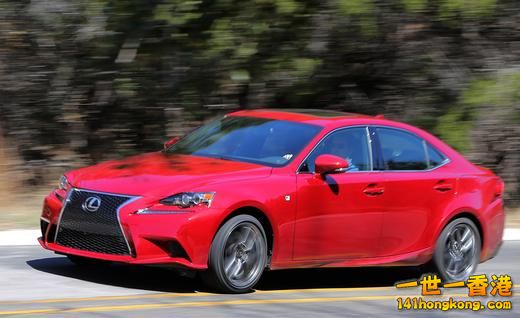
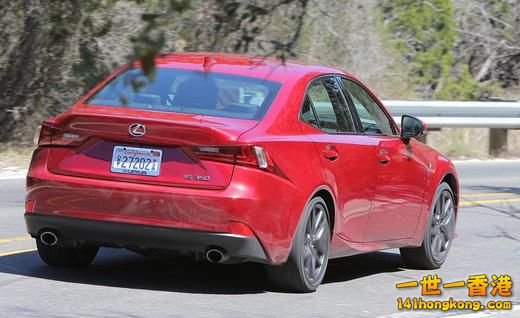
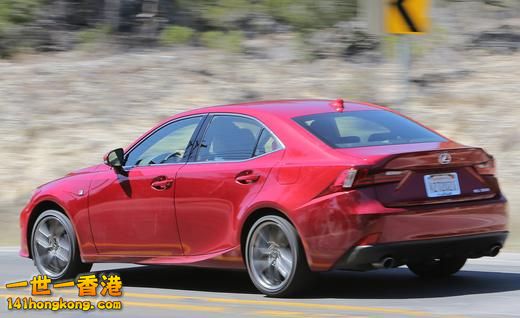
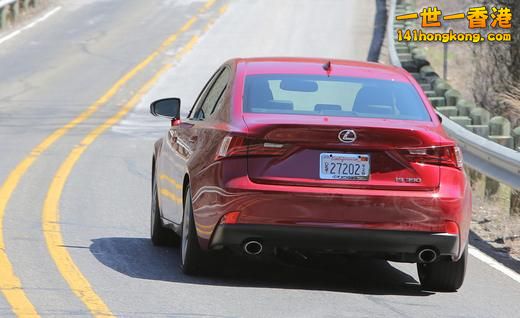
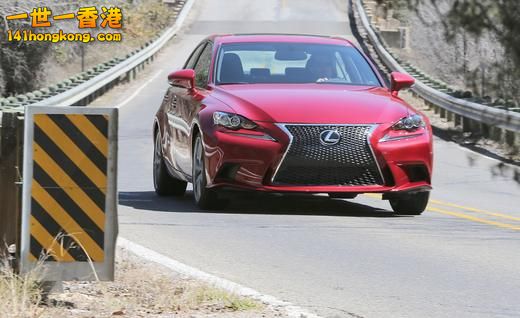
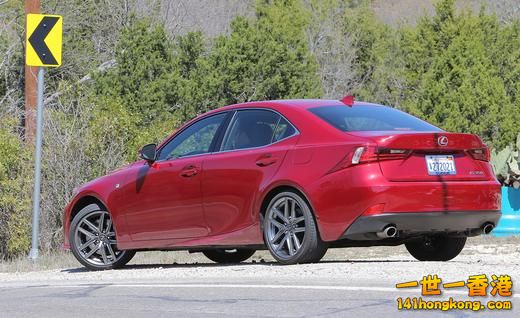
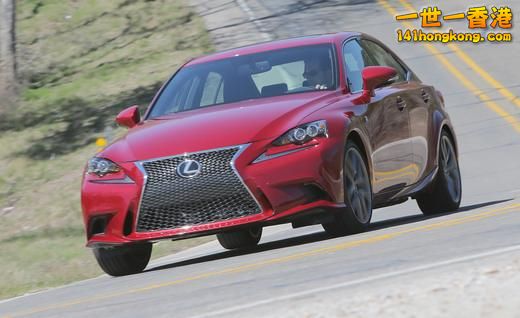
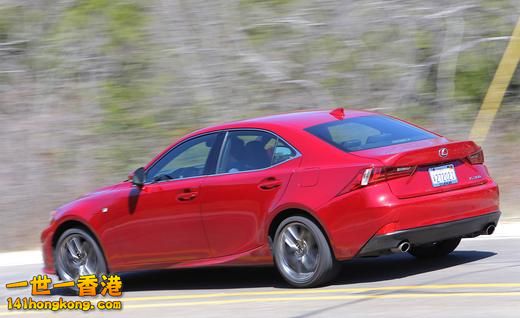
All IS models have paddles for manual shifting, and their gearboxes will rev-match downshifts when in Sport mode. Sport is one of the three possibilities—Normal and Eco being the others—available via a center-console knob fitted to all examples. Rear-drive IS350 F Sports add a Sport+ level, and all-wheel-drive versions have a Snow setting. The subsystems varied with these modes are the usual, even as they vary depending on equipment and model ordered, meaning transmission shift mapping, an adaptive suspension, the electric power-steering effort, and the steering ratio. If all this sounds like a lot, it is, and even one Lexus official chuckled at the many permutations.
Lexus uses the last IS’s front suspension design but adds a larger anti-roll bar, and it adapted the multilink setup from the excellent new GS at the back. The power steering is swiped from the GS, too, and the IS’s new platform is a scaled-down version of its bigger brother’s. Braking is handled by 11.7- and 11.5-inch discs on IS250 models, and by 13.2- and 12.2-inch discs on the IS350. The rotors live behind 17- or 18-inch wheels; the larger rollers come in staggered widths and pack the most visual sizzle, and they’re standard on all F Sports.
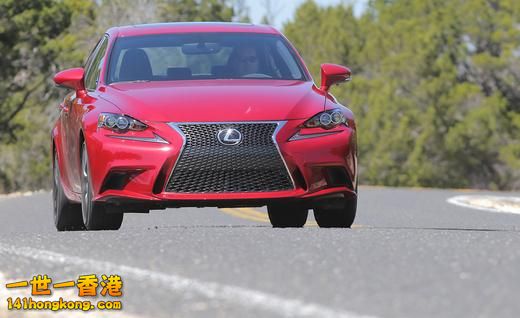
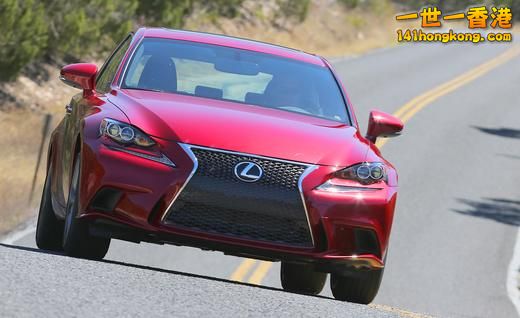
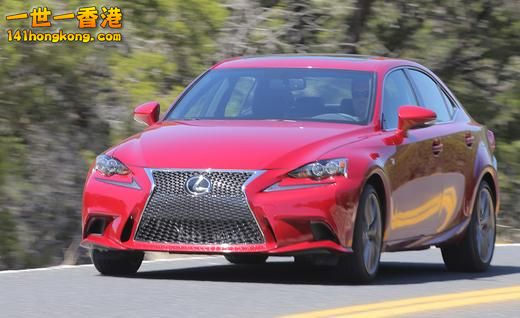
Drive Time
When Lexus said we’d be in Austin to drive the new IS, we assumed we’d sample the sedan at the Circuit of the Americas. Not so. We instead went to Austin Driveway, a technical, vest-pocket circuit with 110-mph straights (at least in the IS350 F Sport), tight corners, and a junior version of Mazda Raceway Laguna Seca’s famed Corkscrew. Lexus brought a BMW 335i and a Mercedes-Benz C350—both with sport-suspension options—plus a last-gen IS350 F Sport for comparison. Sadly, the car with the best-handling chassis in the segment, the Cadillac ATS, was absent.
Stressing that this was a brief and informal track-only comparison—a proper comparo is forthcoming—we found the BMW was our favorite, with the IS350 F Sport a close second. There’s a purity to the BMW’s dynamics, with fluid, accurate steering and an inherent balance that’s easily controlled with the throttle. In Austin, the Lexus delivered 90 percent of the same experience, but it didn’t feel as stable or as finely honed. The Mercedes had the lightest steering, and its grip likely was compromised by its standard mud-and-snow tires. (It’s also the oldest of the group; a new C is due in about a year.) The eight-speed in the IS350 is a nice addition, as its closer ratio steps keep things smoother and quieter than in the six-speed IS models.
The old IS350 F Sport was a pleasant surprise. We didn't get to drive it on the open road, and the new IS offers a better overall ride-and-handling balance, but the old version was as much fun as the new on the track. It set itself apart from its ancestor in that it had what you might call a squarer edge to its limits. When pushed, it would take a more obvious set, and it felt a bit more, well, boy-racer-ish.
We drove all-wheel-drive versions of the 2014 IS350 F Sport and IS250 on public roads. For all the available chassis settings, at sane speeds, one might just as well set it to Normal and forget it. In doing so, the IS proved to be a quite satisfying dual-purpose machine, as capable of fading into the background and letting you explore satellite radio as beating its chest and exploring its limits.
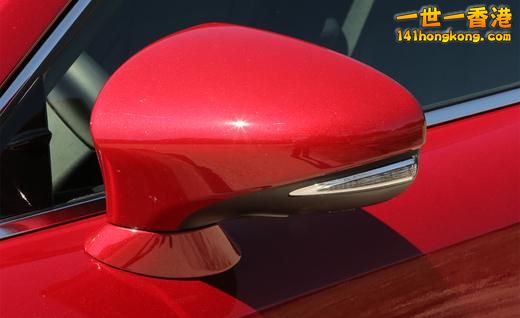
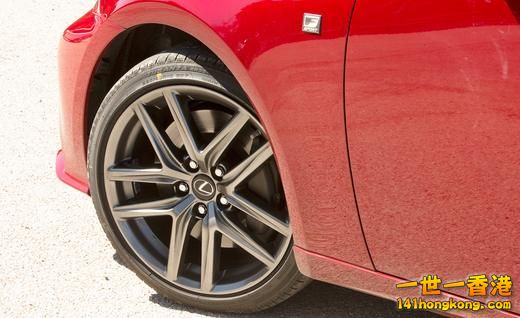
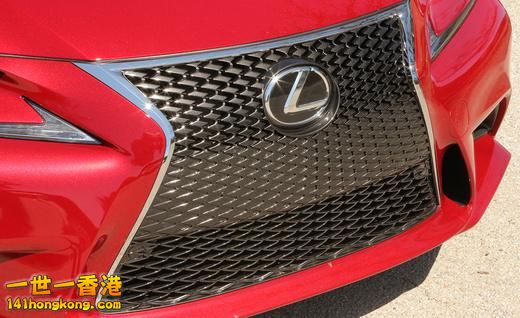
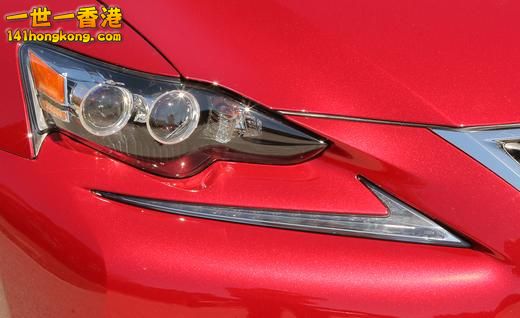
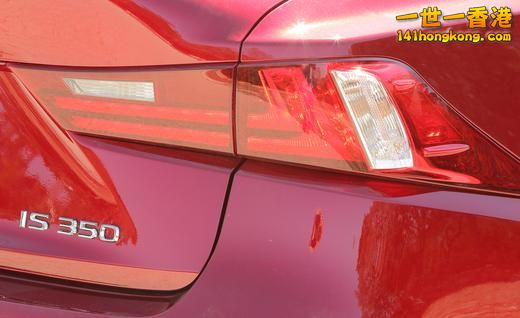
Refined Style
From an exterior design standpoint, one could argue the 2014 IS isn’t all that different than its predecessor. But the details make the difference. Most obvious is the spindle grille, which has black horizontal bars on the standard IS and black mesh on F Sports. In either case, when a car is bearing down on you from behind, the shape is as noticeable as the Dodge Charger’s gun-sight mug, and about as aggressive. HID headlamps are standard, and LED units are available as part of an optional package.
From the side, the IS has a prominent upswept line that runs from the doorsill to the taillights, which now angle down and out. Happily, the rear spoiler is no longer tacked on but is a part of the trunklid’s trailing edge. The new platform means the wheelbase is extended by 2.7 inches to 110.2, and overall length is up by 3.4 inches to 183.7. Height and width are up by less than a half-inch. As does just about every automaker at every new-car introduction, Lexus claims greater body rigidity, thanks to added bracing and the strategic use of spot welds, laser screw welding, and body adhesive.
Lexus’s marketing V-P, Brian Smith, will tell you the most notable thing about the latest IS is the extra legroom—0.9 inch up front, 1.6 inches in the rear—that comes with the added length, although the rear space is in reality aided by sculpted front seatbacks. There’s no doubt the old IS was tight in back, though, and the new car is better. This six-footer set the front seat to a comfortable driving position and then clambered into the rear seats; he ranked the BMW the best, the IS close behind, and the Mercedes in third place. (The 2015 C-class will grow larger to accommodate the CLA250 below it in the lineup, which should resolve its space issue.) This time around, Lexus has given the IS a 60/40-split-folding rear seatback, another useful change.
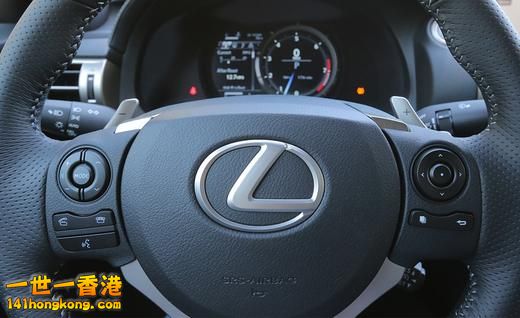
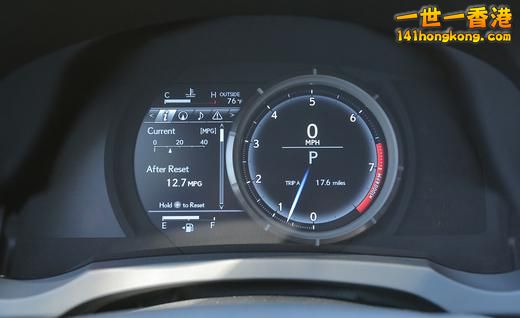
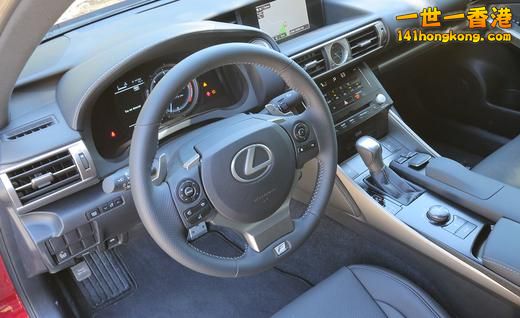
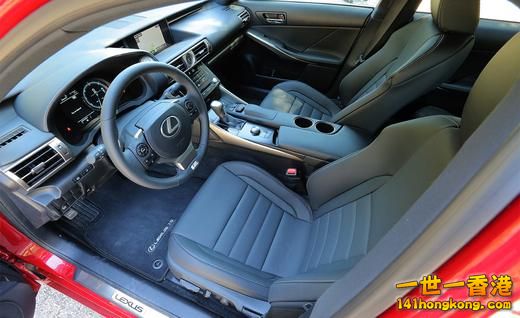
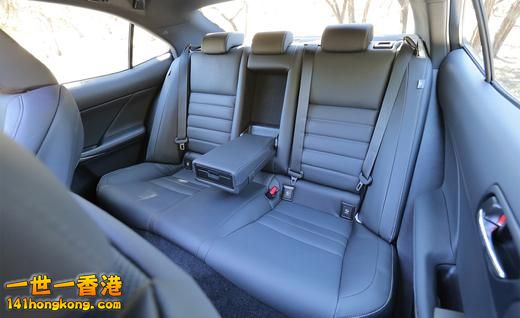
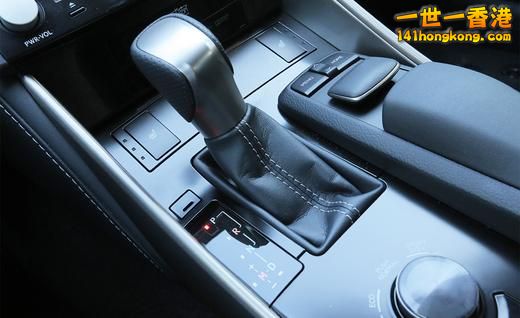
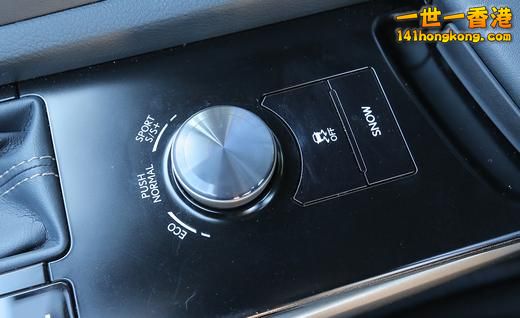
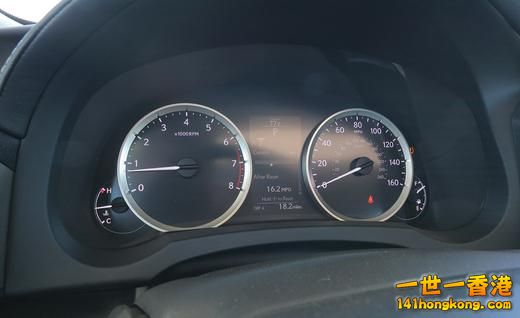
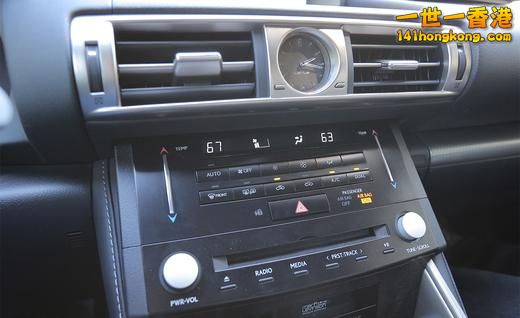
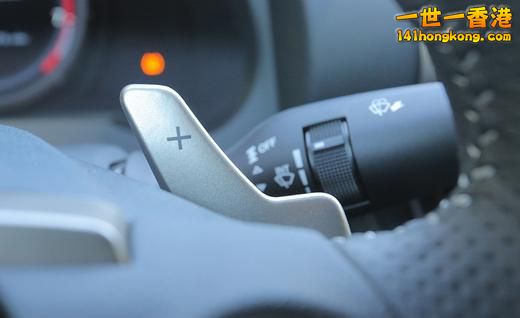
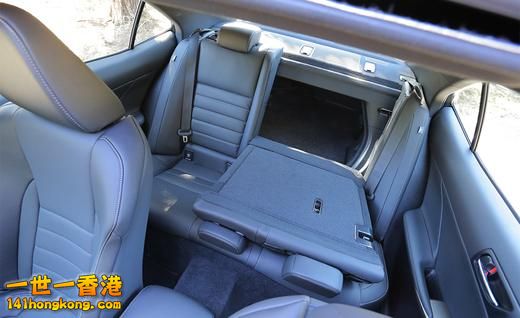
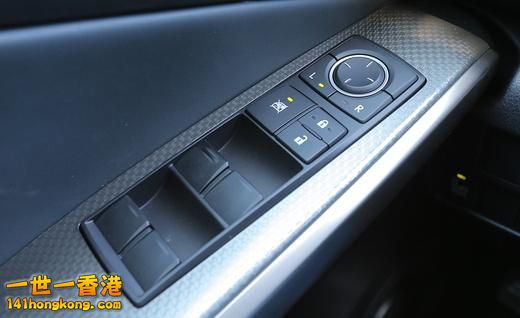
Inside, Lexus has abandoned the rather traditional look of the old IS’s center stack in favor of what might be called a more technical and layered look that nods toward the LFA supercar. From top to bottom now reside a seven-inch screen, the HVAC vents, and then the HVAC and audio controls. On the center tunnel, you’ll find Lexus’s “mouse” infotainment control. It guides a cursor on the screen, but it still never quite lands it where you want it. F Sports have a more direct homage to the LFA in their instrument clusters in the form of the central multireadout dial that swings into position when you light the engine. It’s a well-laid-out, easy-to-use arrangement supplemented by steering-wheel buttons, but it’s also a little colder compared with the last IS. There’s much to like about the LFA from which the interior is partly derived, but it just isn’t as sumptuously designed as, say, a Ferrari.
Lexus has jumped onto the touch-sensitive capacitive-switch train, using the technology for changing the temperature of the climate-control system. The switches are similar to those found in many Cadillacs, Fords, and Lincolns, but whereas the Detroiters use long horizontal bars, those in the Lexus are short, narrow, and vertical and work more effectively. You won’t find yourself often looking down to aim your finger or inadvertently changing the radio volume when reaching for something else. Provided you’re not too broad abeam, the seats are quite comfortable and nicely cup backs and backsides. All the modern safety and driver-monitoring technology is available, including blind-spot monitoring, lane-departure warning, 10 standard airbags, and rear cross-traffic alert.
We have no pricing information yet but suspect the 2014 will nudge upward while staying within the mid-$30,000-to-low-$40,000 envelope of today’s car. Options include a backup camera, navigation, a 15-speaker Mark Levinson audio system, a Premium package with full-LED headlamps and heated and ventilated seats, and a Luxury bundle that brings the Premium goods, rain-sensing wipers, a contrast-stitched leather interior, wood trim, blind-spot monitoring, cross-traffic alert, and a power tilting-and-telescoping steering wheel.
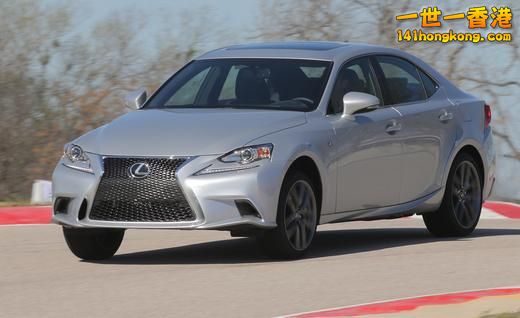
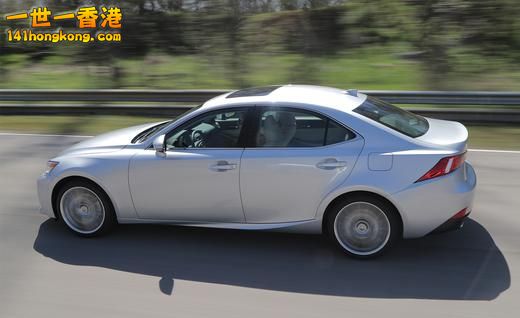
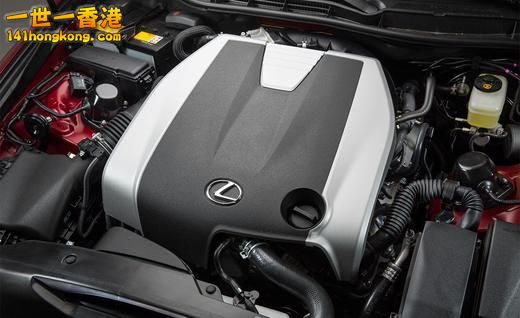
A hybrid version prepped for Europe won’t be sold here, and there are no official updates on the next iterations of the IS250/350 C folding-hardtop convertibles or the 416-hp V-8–powered IS F, both of which continue in their current forms for the time being. (We’re hearing that the next IS F will drop the eight for a twin-turbo V-6, however.) A coupe version might still be possible, too, and we hope it looks just like the striking LF-CC concept from last fall. We might know more about those models by midsummer, which is when current IS sedan owners will be able to try the new version and decide if they’re ready to trade up. |
|

